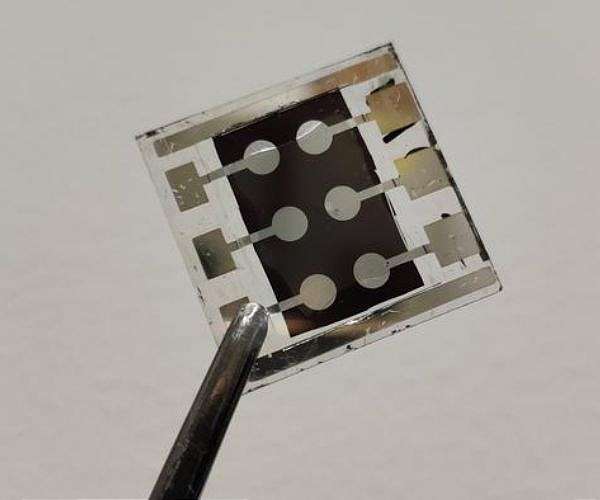Simple method increases the sustainability of perovskite solar cells in real-world settings
A research team of the Federal University of ABC (UFABC) in Sao Paulo has developed a new method to reduce the demolition of Perovskiet solar cells, which may be cleared by a path to their wider commercial adoption. The study immediately deals with one of the most important barriers for the use of Real-World: the rapid loss of performance with which these cells are confronted when they are exposed to the environment and temperatures.
Perovskiet solar cells rival silicon in efficiency and are cheaper to produce. They are lightweight, flexible and semi-transparent, which makes use in applications possible, ranging from solar windows to energy-generating tents. However, their limited sustainability under typical environmental conditions has been a crucial challenge.
The UFABC team, supported by FAPESP and Shell via the Center for Innovation on New Energies (CINE), successfully manufactured PEROVSKIET solar cells under normal environmental conditions without the controlled humidity and temperature that is typical of laboratory environments. “The solar cells in this work were obtained under environmental conditions, without major humidity controls, which may be more compatible with industrial preparation conditions,” said Professor Andre Sarto Polo of the study coordinator.
The researchers have focused on composition coordination and have modified the methylammonium -based perovskites by gradually adding formamidinium (FA+) Kations. The resulting materials were then used to manufacture solar cells, all processed and tested in environments of 40% to 60% relative humidity.
During a test period of 90 days under environmental conditions, cells with a higher FA+ content, performed considerably better than those without. Devices with more than 25% FA+ retained 80% of their initial efficiency, while they broke down completely within 30 days without FA+.
“This work shows how the absorption of FA+ Kations in Mon+ -based perovskites causes an increase in the durability of perovskite solar cells that have been manufactured and measured under environmental conditions,” Polo said.
He noted that the FA+ Kations increases the crystalline grain size in the perovskiet structure, reducing edge areas where moisture has the tendency to accumulate and initiate degradation. This microstructural change helps the solar cells to maintain the performance for longer under realistic conditions.
The findings, part of doctoral research by Lucas Polimante, suggest a scalable and less resource-intensive route to the production of long-term perovskiet solar cells.
Research report:Improving the stability of methylammonium -based perovskiet solar cells prepared in environmental conditions by adding formamidinium kations

